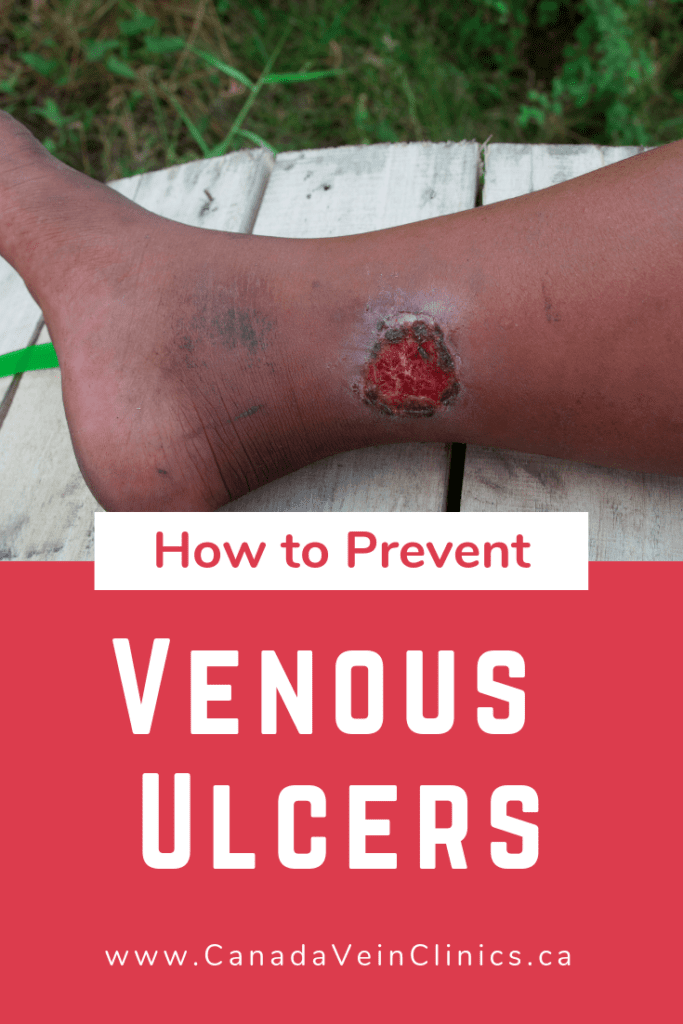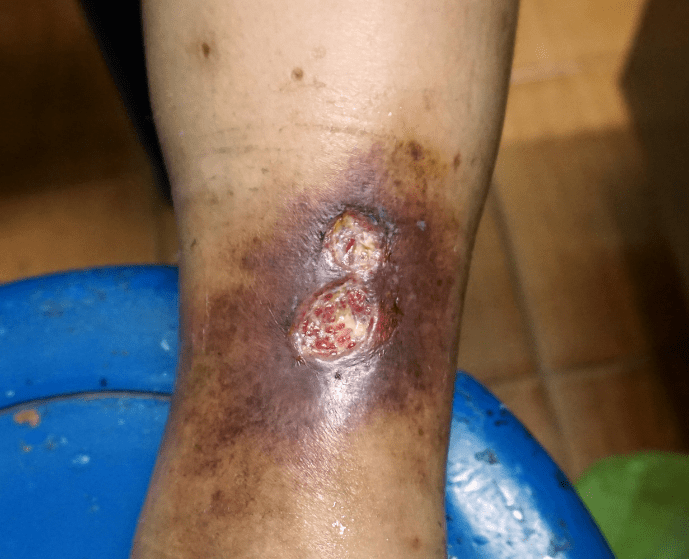If you have varicose veins, you should know the possible complications so you can identify them and seek the appropriate medical care.
One of the most noticeable issues a patient may face is venous ulcers. When veins in your legs can’t circulate the blood back to your heart, the blood can pool, creating swelling and building pressure in the veins. Untreated, venous ulcers (also known as stasis ulcers or open sores) can develop.
What Are Venous Ulcers?
Venous ulcers occur if the vein valves are blocked or weakened (venous insufficiency). The increased pressure and blood build-up make it difficult for oxygen and nutrients to get to the affected tissue. When this happens, cell death and tissue damage occurs and wounds develop.
Since varicose veins occur when your legs can’t circulate blood normally, those with varicose veins are at a higher risk of venous ulcers. You’re also at an increased risk if:
- You’ve had deep vein thrombosis (DVT)
- You’re in your elder years (the risk increases with age)
- You’re obese
- You’re pregnant or a woman
- You have a sedentary job
- You’ve had a surgery or injury that requires bed rest or inactivity
Symptoms of Venous Ulcers
Early signs of venous ulcers in the affected leg include:
- Thin, itchy skin
- Swelling
- Cramping
- Tingling
- Dark red, brown or purple skin (colour of blood pooling)
Once the venous ulcer has developed, it will appear as a shallow, red open wound. Other signs and symptoms include:
- Pain
- Uneven borders of the wound
- Shiny, warm and discoloured skin around the wound
- Yellow tissue may cover the wound
How to Prevent Venous Ulcers

The recommendations to prevent venous ulcers are the same steps you’d take to control your varicose veins and encourage blood flow:
- Maintaining a healthy weight or losing weight if you’re obese (added pressure can reduce circulation)
- Exercising regularly
- Taking frequent breaks and moving around if your job requires you to sit or stand for long periods of time
- Moving your legs during long flights or car drives
- Frequently elevating your legs
- Wearing compression stockings
- Quitting smoking
Canada Vein Clinics specializes in the correction and treatment of venous insufficiency. Take the first step to better vein health by booking a consultation today.
Venous Ulcer Treatment
Since venous ulcers are open wounds, they need to be properly bandaged and cared for to prevent infection. However, unlike many other wounds, they may not heal without treatment.
If you think you have a venous ulcer, you should see a specialist at Canada Vein Clinics who can confirm the ulcer and make a treatment plan to prevent it from reoccurring.
Based on what the doctor observes, he or she may recommend:
- Keeping the wound clean
- Applying an ointment or medicated cream to prevent infections
- Wrapping it in a dressing and keeping it dry
- Wearing compression stockings over the wound to promote blood flow
- Avoiding products that may irritate skin
- Lifestyle changes (as discussed in the prevention section above)
- Prescribed medication to promote blood flow, such as pentoxifylline
Your Canada Vein Clinics doctor may also prescribe you antibiotics to treat or prevent infection. In more severe cases, surgery may be required or a skin graft may be recommended to close the wound.
If you’ve seen one of our doctors and notice signs of an infection after, you should make another appointment. Signs of an infection can include:
- Puss
- Odor
- Bleeding
- Fever
- An increase in pain, warmth and swelling instead of it improving
- Drainage that’s cloudy or yellow in color


